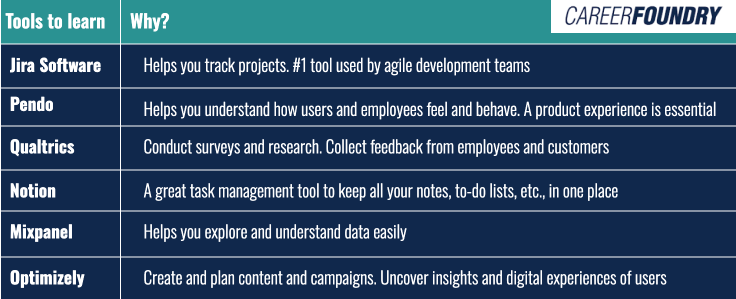If you’ve recently kickstarted a career in product management or are simply intrigued by it, you may want to dig deeper to know what “product operations” are, as it’s common to see most beginners confused about what the role entails.
For starters, though not mutually exclusive, product operations differ from product management (even though the terms are similar.) While product managers are concerned with a product’s strategic vision, planning, and overall lifecycle of a product, the product ops folks focus more on the “how” of product development and delivery.
Product operations are a guiding force to streamline processes, enhance cross-functional collaboration, and propel a product to new heights. It’s a function necessary to maximize the potential of any product-driven organization.
This article will cover:
- What is product operations?
- Product operations manager responsibilities
- Product operations best practices
- Product operations FAQ
1. What are product operations?
Product operations refer to a collection of practices that facilitate the development of a product goal, such as its development or feature upgrades. Also known as product ops, product operations synthesize customer success with product features and engineering.
The discipline lies at the intersection of technology, development, communication, research and development, and various other processes related to the product. It’s most often practiced as part of agile methodologies such as Scrum.
To recap: The Scrum system places importance on regular meetings:
- daily stand-ups, which take place every day
- sprint planning, which takes place at the beginning of a sprint or a manageable chunk of a project
- a sprint review, which takes place at the end of a sprint that lasts a few weeks
Product owners vs product operations managers
In Scrum terminology, it’s a product owner which carries out a lot of these tasks. So how do the two roles differ from each other?
A product owner is the one who takes responsibility for building the final product. On the other hand, the product operations manager oversees the actual operations that result in product development. These diverse professionals incorporate product operations to arrive at stated product development goals.
2. Product operations manager responsibilities
Typically, two factors underlie the role and responsibilities of product ops managers, which are:
Data-driven decision-making
Product operations rely on data derived from sources without human errors and biases. According to a Gartner report, 75% of software providers may depend on insights generated from embedded software analytics as they tend to be automated and perceived as the “cleanest” data.
Product ops rely on such insights to make critical decisions, so that data-driven decision-making is implemented across the organization.
Collaboration and communication
Product ops teams focus on liaising between different departments and ensuring a constant communication loop to enhance efficiency and productivity.
As a result, they add a layer of collaboration and communication across departments and reduce knowledge gaps and miscommunication.
Now that you know what product ops are, let’s cover some of the critical responsibilities of those working in this department.
Some key tasks of a product operations manager
Product ops managers have several key tasks to ensure that the final product or product improvements align with objectives.
However, the final list of responsibilities also depends on the size of the company where one works at. For instance, in smaller companies, multiple roles may be held by the same person who operates as:
- the product owner (the one who conceives the project)
- the project manager (the one who is responsible for ensuring the conception is realized)
- the product operations manager (the one who liaises with different departments, and ensures the product comes to fruition)
In larger organizations, on the other hand, these are distinct roles. Now, let’s exclusively focus on the key responsibilities of a product operations manager, which are:
Ensuring that essential tools are used
The development and design team may use several tools derived from the product tech stack. (This includes the various tools a company uses to reach the end goal. For example, a “dev tech stack” includes all the software and hardware the development and design teams need to complete the project successfully.)
The product ops manager manages the product tech stack and implements internal best practices to navigate effective outcomes. In addition, product ops managers also ensure that the tools are being used by everyone involved.
Collating, managing, and synthesizing data
Product ops managers collect data from automated tools. These may include software programs, embedded tools, and other sources such as product usage metrics.
After collecting data from several sources, they organize and analyze qualitative and quantitative data to derive insights. This qualitative data may include consumer feedback, support tickets, and feature requests.
Engaging in research and development
Product ops managers constantly test and try different methods to ensure successful product outcomes.
As a result, they may often try new features based on requests, conduct A/B tests, interpret the results, and channel them into something concrete that the development team can use.
Building policies and strategies
Product ops managers are often required to act as intermediaries between different departments.
Due to this, they usually access various requirements, deficiencies, and insights. This allows them to build policies that reflect the needs and requirements of different entities.

Assuming an advisory and leadership role
Product ops managers are responsible for getting various tasks done across departments ranging from sales and marketing, customer service, R&D, product design, and product development.
Hence, they are keenly aware of the ground reality and can easily communicate with decision-makers who assume C-level roles. Therefore, they automatically take leadership and advisory roles for seniors and other employees.
Now, let’s go through some strategies and best practices that help supercharge product operations.
3. Product operations best practices
The most important tenet of product operations is to ensure that disparate parts within an organization are brought together so that the product is successfully produced.
Depending on the organization’s size and the project, this may involve several departments. As a result, the best practices can vary depending on the project you may be tasked with.
Nevertheless, here are some of the best practices to keep in mind if you’re a product operations professional or aspiring to be one:
Focus on constant people skills development
Once you get into product ops, you must take care to hone your people skills. This includes a broad range of starting from presentation skills, conducting meetings, and building relationships with key decision-makers to customer nurturing.
The best practice isn’t just to implement these skills, but to hone them and further build upon them.
Work on building knowledge of data analysis
Analysis of qualitative and quantitative data requires:
- using different software tools such as Statistical Product and Service Solutions (SPSS) by IBM
- knowledge of Python or R (programming languages)
- knowing how to extract, manage and analyze data from different software programs
Be open to changing goals and strategies
Sometimes despite the work that goes into making solid PRDs, Product requirements often change abruptly and without any notice. Hence, you need to be able to adapt to changing circumstances with ease.
A helpful practice is to be aware of every minute of your product development goals and strategies so that cascading effects when changes occur are limited and manageable.
Seek feedback from everywhere
You should not limit feedback collection from customers and end-users. So, it always helps if you actively seek feedback additionally through surveys, forms, and interviews with product development engineers, designers, and decision-makers.
Invest in understanding customers, developers, and designers
Navigating product ops effectively requires at least a basic knowledge of psychology. You must understand how different customer personas play out regarding product feature requests.
On a similar note, you’ll also need to work with developers and designers to ensure they are on board with each other and that there are no interpersonal conflicts. Developing psychological sophistication can go a long way in helping ensure that your contribution as product ops manager is efficient.
Take responsibility for the product dev tech stack
As someone looking into product operations, you must ensure that the different elements of your tech stack are always in working condition. It’s also important that you ensure the members of the teams know how to use these tools and replace them with new ones when necessary.
4. Product operations FAQ
What skills and qualifications are required for a career in product operations?
The most essential skills necessary for a product operations management role are people skills, knowledge of the dev tech stack, the ability to visualize and implement strategies and policies, and the ability to work with different teams. You also need robust data analysis and R&D skills.
As for qualification, a lot of companies require an MBA from a good business school to be a product ops manager. However, if you don’t have an MBA, you can start with a BA or another undergraduate-level degree or product management certification.
Nevertheless, you’ll need at least two or more years of people management experience in an agile (preferably Scrum) project management environment. In addition, you will also need five or more years of experience in working with information technology, consulting, or in an operational team in other departments.
What are the main components of product operations?
The main components of product operations management are working with different kinds of data, liaising with various departments, ensuring that product goals are realized, and taking responsibility for the dev tech stack.
What tools or software are commonly used in product operations?
Some standard tools that product operations teams use include agile development, product portfolio management (PPM), heat mapping and user testing, usage analytics, feedback generation, knowledge management, etc. It will help you get a job if you know how to use the tools:

Bottom Line: Product ops is a fulfilling career choice
If you plan to get into product management and like to juggle multiple tasks, product ops may be a fulfilling career choice for you. According to PayScale, product ops managers earn around $96,845, which can shoot up to $127,000.
Product ops managers often need more experience than product managers. Hence, you might want to work as a project manager for a few years and then get into product operations, depending on how micro-level you can get. It’s an exciting and challenging career option, but I’d advise you to get a tidy amount of experience before diving into it!
If you like the resources we discussed here, or are interested in product roles in general, CareerFoundry’s free product management short course should help you get started on your awareness about building and launching products. So sign up for this course and start your learning journey today.
If you’d like to read more on the subject of product management and Scrum instead, check out these articles:
